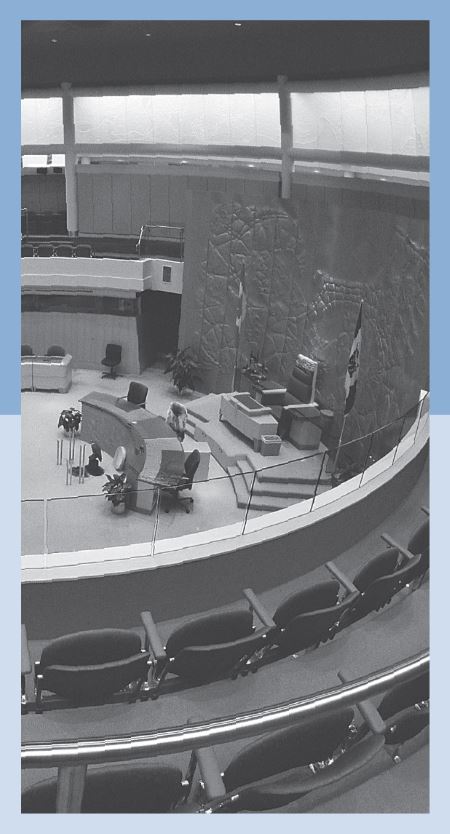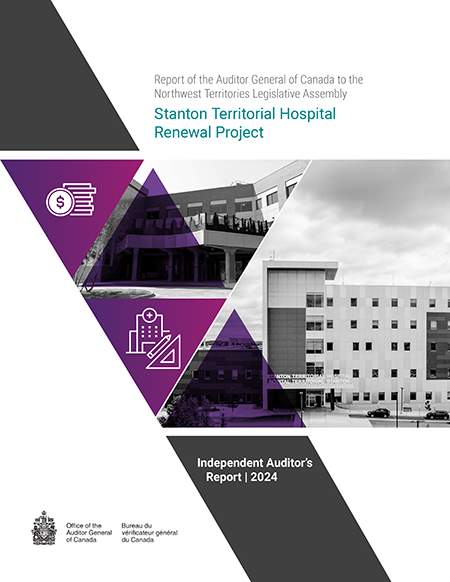2024 Report of the Auditor General of Canada to the Northwest Territories Legislative Assembly
Stanton Territorial Hospital Renewal Project
Key facts and findings
- Roles and responsibilities among the departments of Finance, Infrastructure, and Health and Social Services, and the Northwest Territories Health and Social Services Authority for the management of the project were not well defined.
- Information related to conflict-of-interest declarations and conversations with bidders was missing from the departments’ and the authority’s procurement records.
- The departments and the authority ultimately accepted to move forward with a public-private partnership (P3) project without determining whether the project offered better value for money as a public-private partnership than a traditional procurement method.
- The Department of Infrastructure could not provide us with evidence that it had verified that the over $71 million it reported as going to registered local and northern businesses was accurate.
- We estimated that by the end of our audit period, June 2023, the actual and projected costs over the 30‑year life of the project reached about $1.21 billion. This is about 62% higher than the original expected contract costs that were reported in 2015.
Why we did this audit
- According to the Government of the Northwest Territories, the Stanton Territorial Hospital Renewal Project is the largest building project it has ever undertaken.
- Projects funded by public money must be well planned and managed to provide good value for money.
- Accurate and timely monitoring can identify problems and address them before they become critical.
- Monitoring that local and Northwest Territories benefits are being achieved is critical to support Northwest Territories–based businesses and residents to sustain economic growth.
Highlights of our recommendations
- The Department of Finance, supported by the departments of Infrastructure and Health and Social Services, and by the Northwest Territories Health and Social Services Authority, should publicly report detailed and complete project costs for the Stanton Territorial Hospital Renewal Project that supplement the reporting in the Public Accounts of the Government of Northwest Territories.
- The departments of Finance and Infrastructure should work together to review, update, and monitor compliance with the guidance and policies related to project management, including public-private partnerships, to ensure consistency and that accountability is clear for all entities to support successful outcomes.
Please see the Link opens a PDF file in a new browser windowfull report to read our complete findings, analysis, recommendations and the audited organizations’ responses.
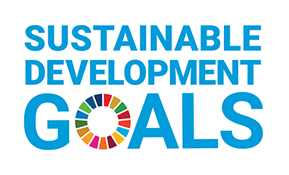

We found that, during the design and construction phases for the new hospital, the departments of Finance, Infrastructure, and Health and Social Services, and the Northwest Territories Health and Social Services Authority monitored various aspects of the project, such as accessible and culturally sensitive design, climate resilience design, and mechanical components. Although the Government of the Northwest Territories had not officially adopted the Sustainable Development Goals in the United Nations’ 2030 Agenda for Sustainable Development, this finding showed that the entities supported the development of sustainable and resilient infrastructure, with a focus on equitable access for all (target 9.1). This contributes to the goal of resilient infrastructure, inclusive and sustainable industrialization, and innovation (Goal 9).
Visit our Sustainable Development page to learn more about sustainable development and the Office of the Auditor General of CanadaOAG.
Exhibit highlights
Stanton Territorial Hospital Renewal Project timeline (2011–2024)
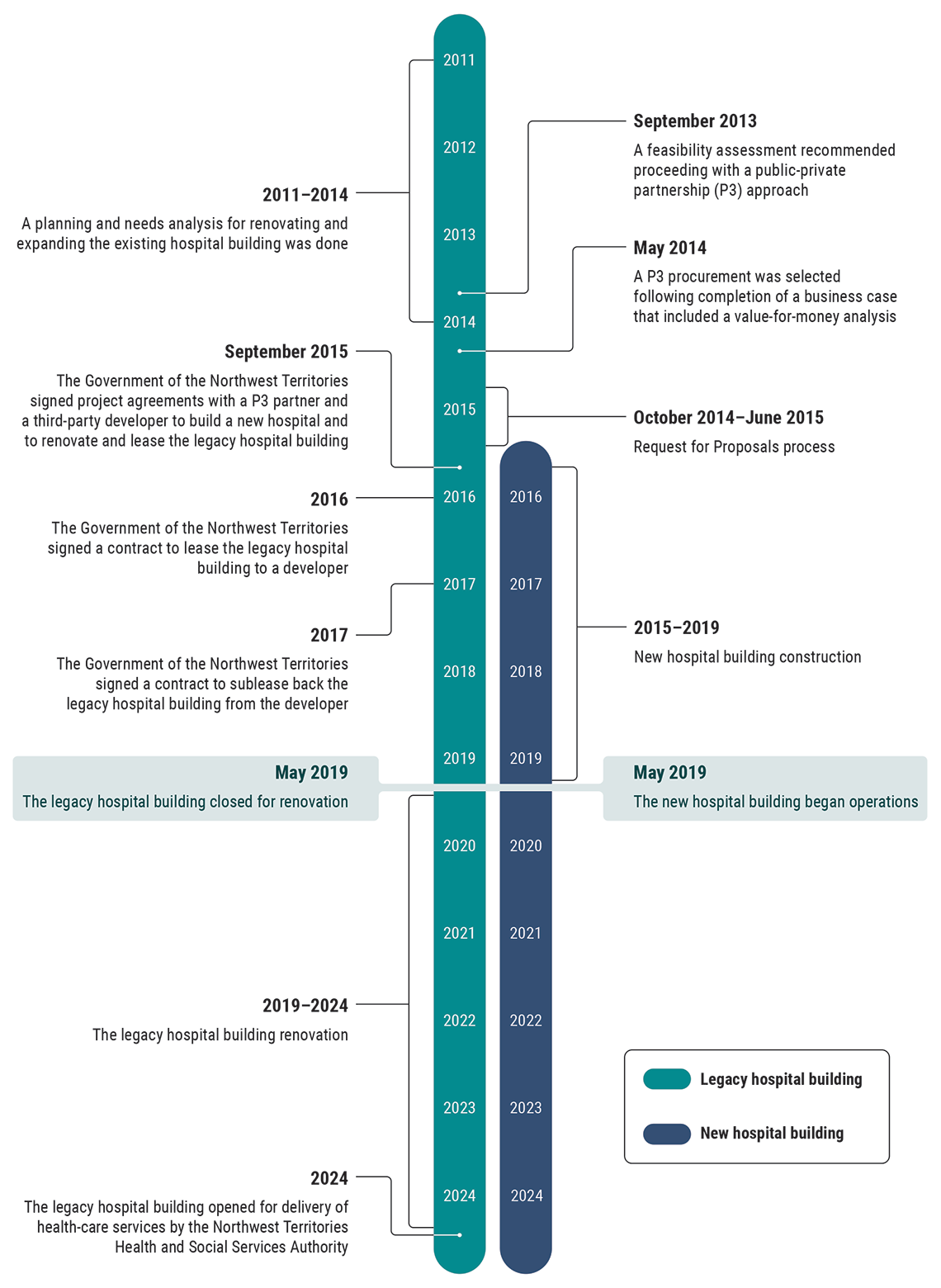
Note: The legacy hospital building opened in May 2024, which occurred after our audit period.
Source: Based on information provided by the departments of Finance, Infrastructure, and Health and Social Services; and the Northwest Territories Health and Social Services Authority.
Text version
This timeline has 2 narrow, vertical columns with years marked inside them and text on both sides of the columns describing the milestones. The first column shows milestones starting at the top from 2011 and progresses down to 2024 for the legacy hospital building, which was the original hospital. The second, shorter column, shows milestones starting at the top from 2015 and progresses down to 2024 for the new hospital building.
2011–2014, for the Stanton Territorial Hospital Renewal Project, including the legacy hospital building, which was the original hospital: A planning and needs analysis for renovating and expanding the existing hospital building was done
September 2013, for the Stanton Territorial Hospital Renewal Project: A feasibility assessment recommended proceeding with a public-private partnership (P3) approach
May 2014, for the Stanton Territorial Hospital Renewal Project: A P3 procurement was selected following completion of a business case that included a value-for-money analysis
October 2014–June 2015, for the legacy hospital building: Request for Proposals process
September 2015, for the Stanton Territorial Hospital Renewal Project: The Government of the Northwest Territories signed project agreements with a P3 partner and a third-party developer to build a new hospital and to renovate and lease the legacy hospital building
2016, for the legacy hospital building: The Government of the Northwest Territories signed a contract to lease the legacy hospital building to a developer
2017, for the legacy hospital building: The Government of the Northwest Territories signed a contract to sublease back the legacy hospital building from the developer
May 2019, for the legacy hospital building: The legacy hospital building closed for renovation
2019–2024, for the legacy hospital building: The legacy hospital building renovation
2024, for the legacy hospital building: The legacy hospital building opened for delivery of health-care services by the Northwest Territories Health and Social Services Authority
2015–2019, for the new hospital building: New hospital building construction
May 2019, for the new hospital building: The new hospital building began operations
Public-private partnership (P3) model at a glance
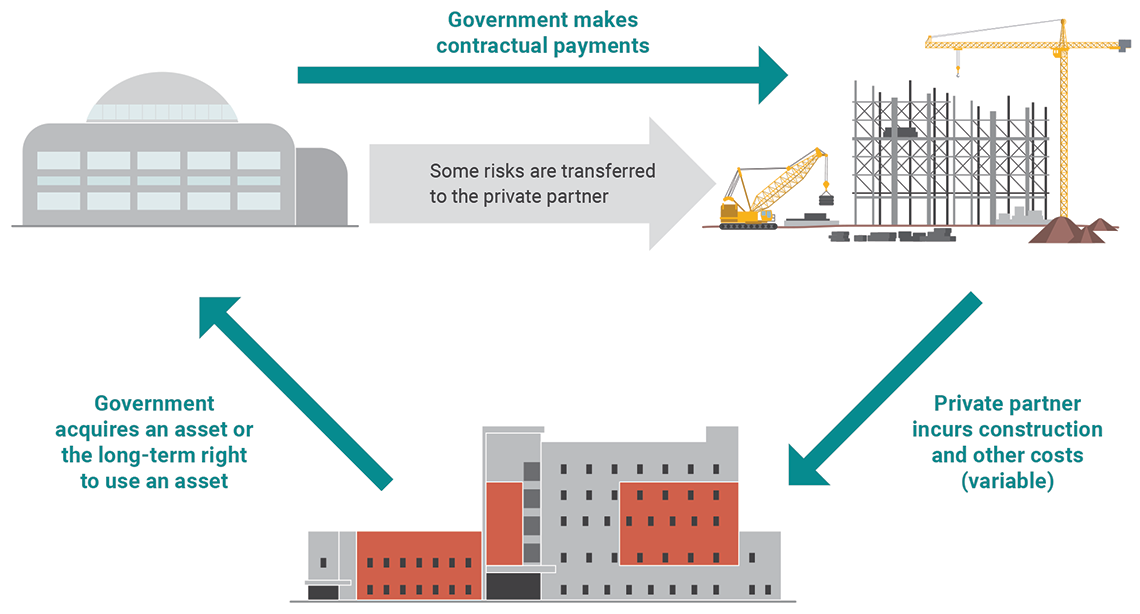
Source: Based on an illustration in the Commentary on the 2016–2017 Financial Audits, Office of the Auditor General of Canada
Text version
This illustration shows 3 stages in the process of a P3. Each one has an illustration with arrows pointing to the next stage in a circular design.
The first illustration is a grey building in the shape of the Northwest Territories Legislative Building, with its distinctive curved roof. A green arrow points to the right of the building with text above: Government makes contractual payments. A grey arrow also points to the right with text inside: Some risks are transferred to the private partner.
Both arrows point to an illustration of a construction site with a yellow boom truck beside the grey, steel skeleton of a building under construction. Beside the building frame is a tall, yellow stationary crane.
A green arrow points down from the construction illustration with text beside the arrow: Private partner incurs construction and other costs (variable). The arrow points to a grey and orange illustration of a hospital building.
From the hospital building, a green arrow points up with text beside it: Government acquires an asset or the long-term right to use an asset. The arrow points from the hospital building toward the legislative building.
The government shifted from leasing the legacy hospital building to Ventura to paying Ventura rent, additional rent for operating and maintenance costs, and other fees as its tenant
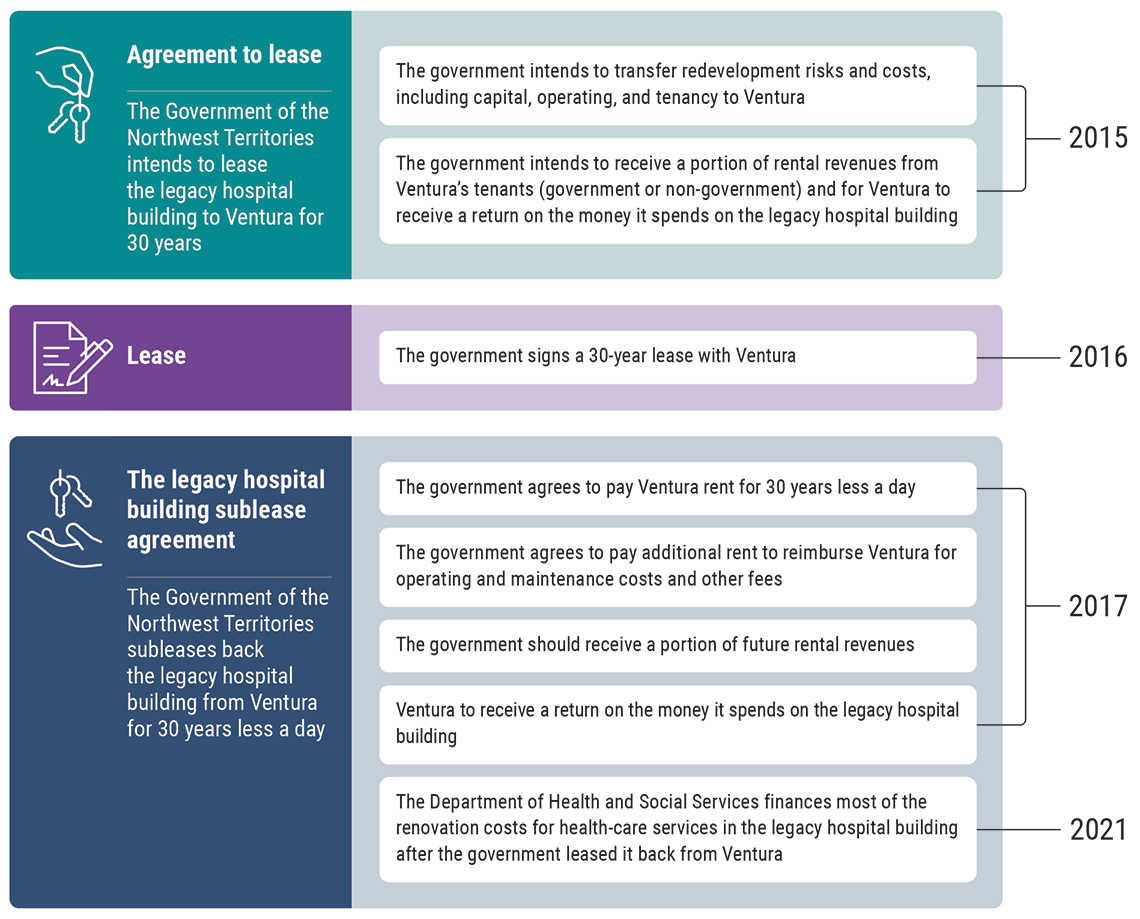
Note: Confidentiality requirements limit what can be disclosed related to aspects of the leasing arrangement. We use the term “leasing arrangement” to cover all components of the agreements in Link opens a PDF file in a new browser windowExhibit 4.
Source: Based on public information, Stanton Territorial Hospital Renewal Project agreements and contracts, and other documents provided by the departments of Finance, Infrastructure, and Health and Social Services, and the Northwest Territories Health and Social Services Authority
Text version
This chart shows the change in transfer of legacy hospital building risks and costs between the government and Ventura from the 2015 agreement to lease to the 2017 sublease.
The agreement to lease box includes an illustration of a hand holding keys and text: The Government of the Northwest Territories intends to lease the legacy hospital building to Ventura for 30 years.
Two text boxes explain events from 2015:
- The government intends to transfer redevelopment risks and costs, including capital, operating, and tenancy, to Ventura
- The government intends to receive a portion of rental revenues from Ventura’s tenants (government or non-government) and for Ventura to receive a return on the money it spends on the legacy hospital building
The lease box includes an illustration of a piece of paper being written on by a pen. A separate text box explains an event from 2016: The government signs a 30-year lease with Ventura.
The legacy hospital building sublease agreement box includes an illustration of a hand receiving keys and text: The Government of the Northwest Territories subleases back the legacy hospital building from Ventura for 30 years less a day.
Five text boxes explain events in 2017 and 2021:
- 2017: The government agrees to pay Ventura rent for 30 years less a day
- 2017: The government agrees to pay additional rent to reimburse Ventura for operating and maintenance costs and other fees
- 2017: The government should receive a portion of future rental revenues
- 2017: Ventura to receive a return on the money it spends on the legacy hospital building
- 2021: The Department of Health and Social Services finances most of the renovation costs for health-care services in the legacy hospital building after the government leased it back from Ventura
Additional costs of over $462 million brought the total costs of the Stanton Territorial Hospital Renewal Project to about $1.21 billion as of March 2023
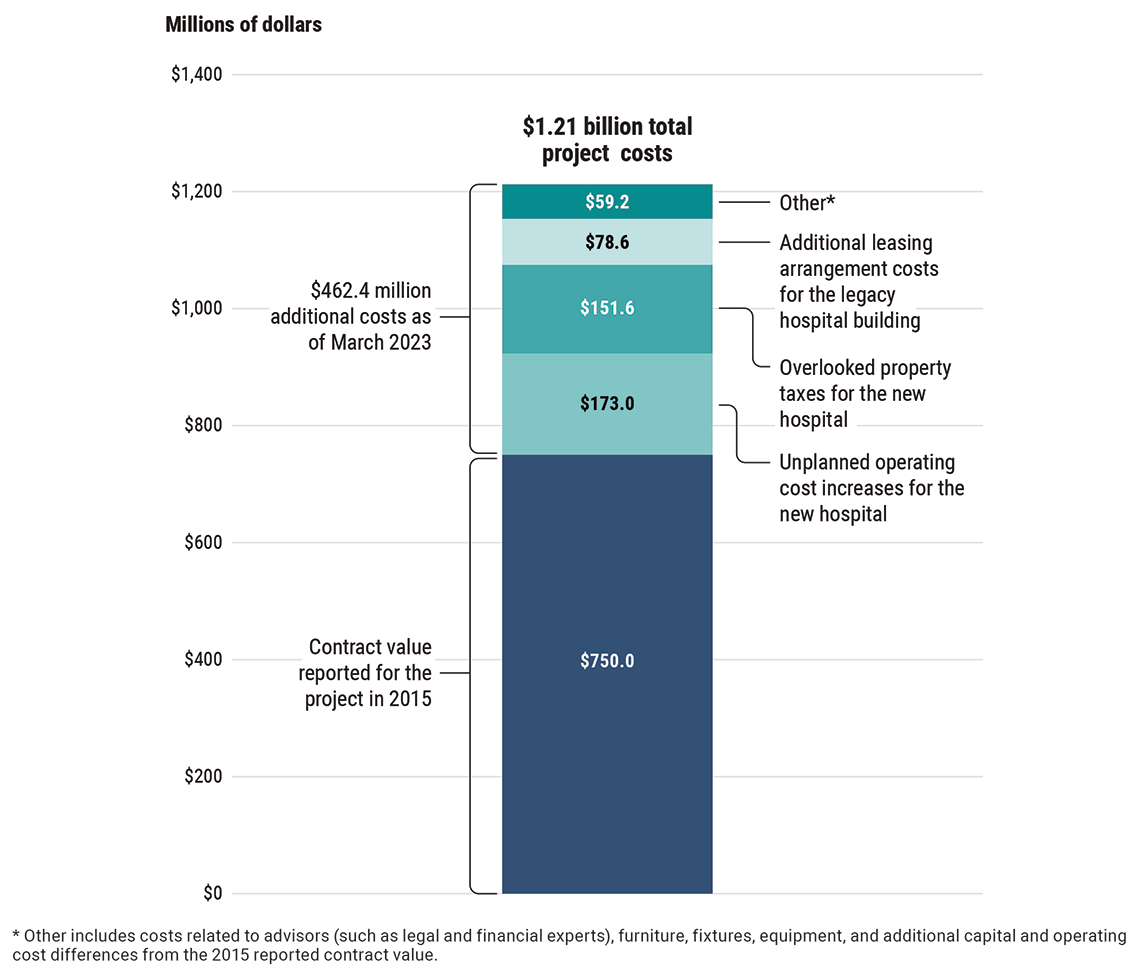
Source: Based on financial reporting published and other financial information provided by the departments of Finance, Infrastructure, and Health and Social Services, and the Northwest Territories Health and Social Services Authority.
Text version
This stacked bar chart has 2 main segments: the contract value reported for the project in 2015 of $750.0 million; and, above it, the additional costs as of March 2023 of $462.4 million broken down as the following:
- $173.0 million: unplanned operating cost increases for the new hospital
- $151.6 million: overlooked property taxes for the new hospital
- $78.6 million: additional leasing arrangement costs for the legacy hospital building
- $59.2 million: other, which includes costs related to advisors (such as legal and financial experts) furniture, fixtures, equipment, and additional capital and operating cost differences from the 2015 reported contract value.
Infographic

Text version
Stanton Territorial Hospital Renewal Project
This infographic is vertical. Each milestone has a box containing dates and text with illustrations on their right.
1988:
Text: Stanton Hospital opens.
Illustration: A grey and orange 2‑storey hospital building.
2011–2014:
Text: Planning phase for renovating and expanding the Stanton Hospital.
Illustration: Blueprints.
Text: A public-private partnership (P3) approach was recommended and selected based on renovating and expanding the Stanton Hospital.
Illustration: A handshake and text saying:
- Sometimes used to carry out major infrastructure projects, a public-private partnership is a long‑term agreement between the public sector and the private sector to offset some risks.
- Public = Government of Northwest Territories
- Private = successful bidder
New heading: Scope change.
2015:
Text: Design and build new hospital. Maintain new hospital.
Illustration: A large, multi-storey grey and orange hospital building, a ruler, compass drawing tool, hard hat, and hammer. Text below the illustration: New hospital
A plus symbol links the next text and illustration to the previous text and illustration.
Text: Renovate and lease original hospital
Illustration: The original grey and orange hospital building has a “For Lease” sign and text below saying: Renovate and lease. An expansion of the building drawn in dotted lines has an X over it with text saying: Expansion cancelled.
Text below the illustration says: The departments and authority reported that the total value of the contract with Boreal Health Partnership was about $750 million. Below the text is an illustration of stacks of bills of money with bands around each stack.
2015–2019:
Text: New hospital under construction.
Illustration: A construction site with a yellow dump truck and a yellow boom truck beside the grey, steel skeleton of a building under construction. Beside the building frame is a tall, yellow stationary crane.
Text: Original hospital building leasing arrangement.
Illustration: A pen and paper with text saying: Between 2015 and 2017, the Government of the Northwest Territories signed a contract to lease the original hospital building to a developer and then signed another contract to sublease the entire building back from the same developer, despite owning the building.
2019:
Text: New hospital opens.
Illustration: The new, multi-storey hospital building with an “Open” sign and sparkling stars.
Text: Original hospital closes for renovations.
Illustration: The old, 2-storey hospital building with a yellow stationary crane holding a “Closed” sign above the building.
March 2023:
Illustration: The same number of stacks of banded money as in 2015 with additional stacks highlighted in white. Text within the illustration says: The audit estimated that the actual and projected costs for the project were about $1.21 billion—over $462 million more than the agreement value reported in October 2015.
2024:
Text: Renovated original hospital reopens under the name Kle-wa-goon-tea Building.
Illustration: The renovated hospital building, confetti, and scissors cutting a yellow ribbon.
Related information
Entities
- Department of Finance
- Department of Infrastructure
- Department of Health and Social Services
- Northwest Territories Health and Social Services Authority
Tabling date
- 29 October 2024
Related audits
